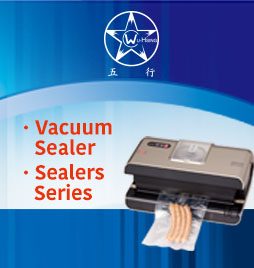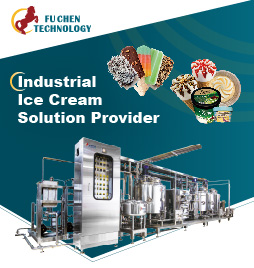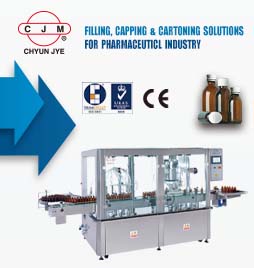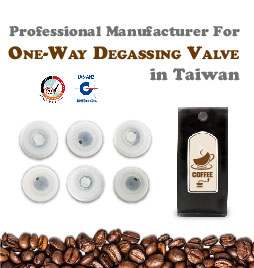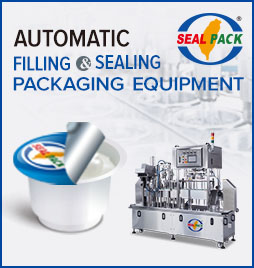Essential oils as additives in active food packaging

ShubhamSharmaabcSandraBarkauskaiteaAmit K.Jaiswalab*SwarnaJaiswalab
a School of Food Science and Environmental Health, College of Sciences and Health, Technological University Dublin – City Campus, Grangegorman, Dublin 7, Ireland
b Environmental Sustainability and Health Institute, Technological University Dublin – City Campus, Grangegorman, Dublin 7, Ireland
c Centre for Research in Engineering and Surface Technology (CREST), FOCAS Institute, Technological University Dublin – City Campus, Kevin Street, Dublin 8, Ireland.
|
*Corresponding author at: School of Food Science and Environmental Health, College of Sciences and Health, Technological University Dublin – City Campus, https://doi.org/10.1016/j.foodchem.2020.128403 Received 1 July 2020; Received in revised form 30 August 2020; Accepted 12 October 2020 Available online 15 October 2020
|
Abstract
Food packaging can be considered as a passive barrier that protects food from environmental factors such as ultraviolet light, oxygen, water vapour, pressure and heat. It also prolongs the shelf-life of food by protecting from chemical and microbiological contaminants and enables foods to be transported and stored safely. Active packaging (AP) provides the opportunity for interaction between the external environment and food, resulting in extended shelf-life of food. Chemoactive packaging has an impact on the chemical composition of the food product. The application of natural additive such as essential oils in active packaging can be used in the forms of films and coatings. It has been observed that, AP helps to maintain temperature, moisture level and microbial and quality control of the food. This review article provides an overview of the active packaging incorporated with essential oils, concerns and challenges in industry, and the effect of essential oil on the packaging microstructure, antioxidant and antimicrobial properties.
Keywords
1. Introduction
Food packaging plays its primary role in the protection of the food product from the influence of the external environment. The major goal of the food packaging is to hold food in best economical way, satisfying both industrial and consumer requirement, ensuring food safety and minimising environmental effects. Advances in food packaging researches led to the development of active packaging, and intelligent packaging. Active packaging is a novel method used to prolong the shelf-life of perishable foods, maintain or improve the quality and safety of prepared foods due to its interaction with the product. Besides, active packaging has potential to replace the addition of active compounds into foods, reduce the movement of particles from packaging materials to food, and get rid of industrial processes that can cause the introduction of pathogenic microorganism into the product (Schaefer & Cheung, 2018). This packaging system also has an advantage in the reduction of foodborne illness outbreaks and food recalls (Vilela et al., 2018). Intelligent packaging consists of “materials and articles that monitor the condition of packaged food or the environment surrounding the food”. It detects changes in the condition of the food or it’s environment, such as pH and temperature changes, thereby extending the function of traditionally used packaging materials by indicating the state of the product through visual changes (Realini & Marcos, 2014). Unlike intelligent packaging, active packaging does not require any changes in the food in order to operate efficiently (Brockgreitens & Abbas, 2016).
Depending on the types of additives incorporated into the food packaging material, active packaging can be categorized into chemoactive and bioactive. In chemoactive packaging chemicals used as an active agent in the packaging material. It has an impact on the chemical composition of the food product and gaseous atmosphere inside a pack (Brockgreitens & Abbas, 2016). Gas scavenging packaging tends to remove gases, which dehydrates the food products and led to the formation of an unfavourable environment for the growth of microbes. Oxygen in the packaging facilitates the growth of aerobic bacteria and causes undesirable changes in food like fat rancidity and meat browning (Busolo & Lagaron, 2012). Various oxygen-reactive materials such as iron, titanium, zinc, etc are used in packaging material as oxygen scavenger (Busolo and Lagaron, 2012, Di Maio et al., 2015). Ethylene gas act as a ripening agent. Ethylene scavengers are used to extend the shelf life of fruits and raw vegetables (Brockgreitens and Abbas, 2016, Terry, Ilkenhans, Poulston, Rowsell, & Smith, 2007). In addition, bioactive packaging contains antimicrobial agents that interact with biological molecules and may inhibit the growth of various microorganisms (Brockgreitens & Abbas, 2016). For example, Azadbakht, Maghsoudlou, Khomiri, and Kashiri (2018) studied the incorporation of Eucalyptus globulus essential oil in chitosan and examined the antimicrobial activity of packaged sliced sausages. The results showed that the log reduction value could be improved by increasing essential oil concentration.
However, there is a growing concern towards chemoactive packaging due to the use of synthetic additives and materials that can cause adverse health effects or make packaging unsustainable for recycling leading to high waste volume. For example, incorporation of synthetic antioxidants such as butylated hydroxyanisole into active packaging results in improved quality of food products because this antioxidant has a potential to protect against lipid oxidation (Domínguez et al., 2018). Despite the fact that butylated hydroxyanisole is a beneficial towards food quality and is widely used in active packaging, it might have a disruptive effect on the endocrine system in humans (Pop, Kiss, & Loghin, 2013). Moreover, the incorporation of particular materials into active packaging can also affect product safety. As defined by Martillanes, Rocha-Pimienta, Cabrera-Bañegil, Martín-Vertedor, and Delgado-Adámez (2017), the use of absorbent pads in food packaging is a very successful approach in controlling moisture released by the food product. However, this packaging method has some limitations because after a while, unsanitary juices become trapped in pads causing undesirable odours, spoilage and potential growth of foodborne pathogens. In this case, natural antioxidants such as polyphenols, essential oils etc. can be added into the absorbent pads that would promote the quality and safety of food products.
Issues with chemoactive packaging led to discover new alternatives such as the incorporation of bioactive compounds from natural sources (Ribeiro-Santos et al., 2017, Ribeiro-Santos et al., 2017). Due to growing consumer demand for natural products, synthetic additives are replaced by natural substances such as essential oils, polyphenols and other natural extracts (Poojary et al., 2017, Vinceković et al., 2017). For example, the addition of natural antioxidants in active packaging material can protect packaged meat from lipid oxidation. Antioxidants can interact with the food product and package headspace resulting in the prevention of active chemical compounds to be used in food products. Antioxidant active packaging can either release antioxidants into the food and the package or absorb oxygen and other compounds from the food or its surroundings. Also, active packaging containing natural antioxidants (polyphenols, essential oils etc) is a cost-saving alternative that also has the potential to eliminate food safety risks (Domínguez et al., 2018). Therefore, the natural substances play a significant role in the antioxidant activity of the active packaging. For example, the effectiveness of active packaging containing thyme essential oil/β-cyclodextrin ε-polylysine nanoparticles (TCPNs) was tested by Lin, Zhu, and Cui (2018). The results showed that TCPNs incorporated into gelatin nanofibers significantly improved the antimicrobial properties against bacteria such as Campylobacter jejuni.
This review article is focused on application of essential oil as additives in active food packaging. Numerous aspects such as current application of essential oils into active food packaging, migration of active compounds from a package to food, effect of essential oil incorporation on the antioxidant and antibacterial properties together with impact of essential oil on the packaging microstructure has been discussed. Furthermore, legal aspects of the use of essential oils in food and future trend are provided.
2. Essential oils
Essential oils are volatile liquids extracted from various parts of the aromatic plants like barks, seeds, flowers, peel, fruit, roots, leaves, wood, fruits, whole plants and named depending from which plant they are obtained (El Sawi et al., 2019, Khorshidian et al., 2018, Ríos, 2016). According to International Organization for Standardization (ISO), essential oil is a ‘product obtained from a natural raw material of plant origin, by steam distillation, by mechanical processes from the epicarp of citrus fruits, or by dry distillation, after separation of the aqueous phase if any by physical processes’ and it can also be treated physically without changing its composition (Mati & Nat, 2013). Essential oils could be extracted by different methods, such as hydro-distillation, steam distillation, hydro-diffusion and solvent extraction (Aziz et al., 2018).
Hydro-distillation is a process in which plant materials are immersed in water in the vessel and the mixture is boiled. The main advantage of hydro-distillation is the extraction from the hydrophobic plants with a high boiling point and the technique is capable of extracting the plant material under 100 °C (El Asbahani et al., 2009). Another extraction method is steam distillation, which is mostly applied. According to Masango (2005), 93% of the extraction could be obtained from this steam distillation. The plant material is heated using steam provided by steam generator. The steam is allowed only to pass through the plant while the boiling water does not mix with the plant material. Heat provided by steam determines the effectiveness of the structural breakdown of the plant material and releases the essential oil. It reduces the amount of waste water produced during the extraction process. In hydro-diffusion extraction, required dried plant materials and the steam is provided with a container. In this process the steam temperature is reduced under 100 °C at low temperature and vacuum is provided by the top of the generator (Vian, Fernandez, Visinoni, & Chemat, 2008). Another process is the solvent extraction method, where solvent like acetone, hexane, ether or ethanol is mixed with the plant material and mildly heated, filtrated and the solvent is evaporated. The filtrated mixture is mixed with alcohol in order to dissolve essential oil and then distillation takes place at low temperature (Tongnuanchan & Benjakul, 2014).
Physical characteristics of essential oils include their high solubility in ether, alcohol, and fixed oils, but low solubility in water which is denser than oils (Dhifi et al., 2016, Filly et al., 2016). Essential oils are usually colourless and liquid at room temperature and are distinguished by their distinctive odour. These volatile liquids can be characterized by refractive index measurement and their high optical activity (Dhifi et al., 2016).
These extracts of aromatic plants are composed of organic compounds such as carbon, hydrogen, and oxygen, and in some cases, nitrogen and sulfur derivatives. Carbon and hydrogen atoms tend to attract functional groups resulting in a relatively inactive framework of atoms in the essential oils (Moghaddam & Mehdizadeh, 2017). These aromatic liquids are diverse due to the presence of different functional groups, and they exist in various forms, including aldehydes, alcohols, ethers, ketones, acids, amines, sulphides, epoxides, and others (Başer, 2007).
2.1. Chemical components
Based on their chemical composition, essential oils can be divided into terpenes and hydrocarbons (Moghaddam & Mehdizadeh, 2017).
2.1.1. Terpenes
Terpenes are composed of a different number of isoprene units (Blowman, Magalhães, Lemos, Cabral, & Pires, 2018). Depending on the number of isoprene units, terpenes can be categorized into hemiterpenes (C5H8), monoterpenes (C5H8)2, sesquiterpenes (C5H8)2, diterpenes (C5H8)4, etc. (Rubulotta, 2019). Almost 90% of all essential oils are composed of monoterpenes. Some examples monoterpenes structured essential oils are Lavandula luisieri, Cymbopogon citratus, white and green tea (Dias et al., 2017, Santana-Rios et al., 2001). Terpenes can also be divided into groups such as acyclic, monocyclic and bicyclic (Blowman et al., 2018). Terpenoid is a type of terpene that has oxygen attached to its backbone. The chemical structure of the most common terpenes is shown in Fig. 1.
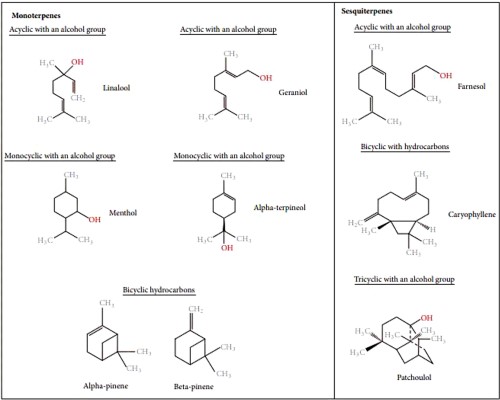
Fig. 1. Chemical structures of essential oil constituents (Blowman et al., 2018).
2.1.2. Hydrocarbons
Other constituents of essential oils are hydrocarbons that are made of carbon and hydrogen atoms. Depending on their structure, hydrocarbons are categorized into aliphatic, alkanes, and aromatic hydrocarbons. It is well-known that citrus oil has a specific acid odour caused by aliphatic hydrocarbons that are composed of 8–10 carbon atoms connected linearly. Also, an aliphatic molecule with six carbon atoms provides a leafy-green scent in floral oils, while octanal aldehydes are responsible for the smell in orange oil. Essential oils contain just a trace amount of aliphatic compounds that have oxygenated functional groups attached to them and responsible for odour. On the other hand, alkanes are composed of carbon atoms liked together by single bonds while alkynes comprise of carbon-carbon triple covalent bonds. Aromatic hydrocarbons are responsible for pleasant odour due to the presence of benzene ring in their structure (Bhavaniramya, Vishnupriya, Al-Aboody, Vijayakumar, & Baskaran, 2019).
2.2. Types of essential oils
Essential oils contain a wide variety of mixtures that can be identified based on their aroma compounds. Different types of essential oils include Azadirachta indica (neem), Lavandula angustifolia (lavender), Thymus vulgaris (thyme), Eucalyptus globulus (eucalyptus), Cinnamomum zeylanicum (cinnamon), Syzygium aromaticum (clove), Citrus limonum (lemon), Melaleuca alternifolia (tea tree), Brassica nigra (mustard), and others (Bhavaniramya et al., 2019). These volatile compounds are responsible for controlling microbial growth and preserving food. For instance, neem essential oil is a volatile mixture extracted from seed kernels of the neem tree. It has unpleasant sulphur and garlic aroma (Bodiba & Szuman, 2018). The study carried out by Ali, Sultana, Joshi, and Rajendran (2016), showed that neem essential oil significantly improved the antibacterial activity in poly (ethylene terephthalate) polyester fabric. Lavender essential oil is produced by steam distillation from the plant known as Lavandula angustifolia. This type of oil contains several chemical compounds that include linalyl acetate, linalool, lavandulol, lavandulyl acetate, B-ocimene, l-fenchone, viridiflorol, camphor, etc. (Bhavaniramya et al., 2019). A study by Jamróz, Juszczak, and Kucharek (2018), used lavender essential oil in starch furcellaran-gelatin (S/F/G) films to test their antioxidant, antimicrobial and physical properties. The results showed that the different concentrations (2%, 4% and 6%) of lavender essential oil in S/F/G film had positive and negative effects on its physical properties. At the same time, antioxidant and antimicrobial ability was significantly improved leading to the prolonged shelf-life of packed foods.
3. Current application of essential oils into active food packaging
Essential oils are widely used in the food industry due to their natural antimicrobial, antioxidant or biopreservative effect, which helps to prolong the shelf-life in foods. Fruits and vegetables are the most common types of foods where essential oils are applied, including other groups such as fish products, meat products, milk and dairy products, and bread and baked foods. However, when essential oils are added directly to the food matrix, they start to degrade quickly due to interaction between their unstable, volatile composition and external factors such as light, oxidation, and heating. That is why the recent technologies created new methods to improve the stability of essential oils by encapsulating them in liposomes, polymeric particles, and solid lipid nanoparticles (Fernández-López & Viuda-Martos, 2018).
Additionally, the Regulation EU No 450/2009 (Commission Regulation EU No 450/2009, 2009) states that “active materials and articles means that are intended to extend the shelf-life or to maintain or improve the condition of packaged food; they are designed to deliberately incorporate components that would release or absorb substances into or from the packaged food or the environment surrounding the food”. When active agents are encapsulated into packaging material, they release active compounds that improve the quality and safety of food products (Commission Regulation EU No 450/2009, 2009).
The application of essential oils in active packaging can be used in the forms of films and coatings. Films are usually thin sheets that are made beforehand and can be used as covers, wrappers, layer separation or packaging for various foods. On the other hand, coatings are defined as films that can be applied onto the surface of an edible product (Ribeiro-Santos et al., 2017, Ribeiro-Santos et al., 2017).
There are several examples of essential oils and their constituents incorporated into active films. For example, chitosan films containing Eucalyptus globulus essential oil were developed for the packaging of sliced sausages that have a high potential to reduce the antimicrobial activity and control food-borne contamination in food systems (Azadbakht et al., 2018). Another study carried out by Perdones, Escriche, Chiralt, and Vargas (2016) showed chitosan-based coatings containing lemon essential oil were very effective in delaying the ripening process in strawberries due to their reduced respiratory rate. It was also determined that after seven days of storage, the aroma of lemon essential oil did not have any impact on the organoleptic properties of strawberries.
4. Effect of essential oil incorporation on the food packaging material microstructure
The observation of the food packaging material microstructure incorporated with active compounds such as essential oils can be carried out using Scanning Electron Microscopy (SEM) or Transmission Electron Microscopy (TEM). SEM uses an electron beam to scan the structure of edible films with essential oils and compare to the construction of the film that does not contain lipid. In comparison to the traditional food packaging materials that are mostly non-polar plastics, biodegradable packaging and edible films are usually composed of polysaccharides and proteins. Packaging material qualifies to be biodegradable if it completely decomposes or break down into natural elements after its disposal. The edible films or coatings are made from the edible material such as lipids, polysaccharides or protein. These edible films or coatings are formed by pouring an aqueous solution on the flat surface followed by drying at constant temperature. Essential oils can be incorporated within the edible film matrix by using different methods such as emulsification or homogenization. In the aqueous phase, essential oils containing polymer tend to appear in fine emulsions while in dried films, lipid droplets become incorporated into the polymer structure.
The structural arrangement of components has an impact on the final microstructure of the packaging material, which can be changed due to coalescence, creaming and droplet flocculation during the drying period. Also, the polymer forming film has an impact on the loss of essential oils. That is why the interaction between the polymer and essential oils enhances emulsion stability leading to the significantly improved microstructure of the film (Atarés & Chiralt, 2016).
According to the study carried out by Atarés, Pérez-Masiá, and Chiralt (2011), HPMC films incorporated with ginger essential oil which contributed to a more open structure and thicker films compared to the film with no essential oils. Another study by Acevedo-Fani, Salvia-Trujillo, Rojas-Graü, and Martín-Belloso (2015), identified that the addition of essential oils such as thyme, lemongrass and sage into alginate films causes the roughness in the film surface.
Its composition can also determine the final microstructure of the food packaging material. For example, Atarés, Bonilla, and Chiralt (2010) created sodium caseinate films with a small amount of cinnamon and ginger essential oils. The study showed that ginger oil droplets were observed in the protein matrix containing homogeneously distributed cinnamon oil. The conclusion was drawn that different behaviour of both essential oils causes structural differences in the film during drying and result from the complex interactions taking place between the lipid, the protein and the solvent.
4.1. Physical properties
The physical properties of biodegradable food packaging materials containing essential oils are highly depended on their structure. For example, the study carried out by Ojagh, Rezaei, Razavi, and Hosseini (2010), showed that the incorporation of cinnamon essential oil into chitosan films improves its structure and physical properties such as tensile strength, surface hydrophobicity and lower flexibility.
4.1.1. Tensile properties
Tensile properties of the food packaging materials usually depend on the interaction between polymer matrix and essential oil components. Ojagh et al. (2010) conducted a study that proved that the addition of cinnamon oil into films increases their tensile strength due to reorganization in polymer matrix caused by the essential oil. Moreover, it is well known that essential oils are complex liquids that contain numerous volatile chemicals responsible for different functions. The most common compound in the essential oil is phenol which causes protein cross-linking by interacting with different protein sites resulting in improved tensile strength of the film (Atarés & Chiralt, 2016).
4.1.2. Barrier properties
Barrier properties of the food packaging materials plays a significant role in improving product quality and safety due to its ability to prevent moisture. The water vapour permeability (WVP) and the surface hydrophobicity are evaluated by measuring the water contact angle (WCA) that allows determining hydrophobicity/hydrophilicity of the packaging material. The hydrophobicity/hydrophilicity ratio has an effect on the packaging materials ability to control water vapour processes. Since essential oils have a non-polar molecular structure meaning that they are hydrophobic, the incorporation of these volatile liquids into hydrophilic polymer matrices causes the improvement of barrier properties (Atarés & Chiralt, 2016). Pires et al. (2013) also conducted a study proving that incorporation of citronella, coriander, tarragon and thyme oils into hake proteins significantly reduces the water vapour permeability.
4.1.3. Optical properties: colour, transparency, gloss
Properties such as colour, transparency and gloss of the packaging materials influence the appearance of the food product and consumer acceptability. The surface colour of the packaging material is highly depended on the type and concentration of the essential oil added within the packaging material. Yahyaoui, Gordobil, Herrera Díaz, Abderrabba, and Labidi (2016) formulated films with PLA, rosemary, myrtle and thyme essential oils. The incorporation of these essential oils showed a slight colour change which increased when the concentration of essential oils increased. In contrast, the study carried out by Mohsenabadi, Rajaei, Tabatabaei, and Mohsenifar (2018) proved that the incorporation of free rosemary essential oil into the starch-carboxy methyl cellulose did not have a significant effect on the optical properties of the films. Arezoo, Mohammadreza, Maryam, and Abdorreza (2019) tested the incorporation of cinnamon essential oil and nano TiO2 into sago starch films and found an increase in yellowness which is associated with cinnamon essential oil colour.
In a study carried out by Sharma, Barkauskaite, Duffy, Jaiswal, and Jaiswal (2020a) on a poly (lactide)-poly (butylene adipate-co-terephthalate) (PLA-PBAT) film incorporated with the thyme oil and clove oil showed that incorporation of clove oil and thyme oil had significant impact on packaging film optical property. The results showed that the clove oil composite films depicted pale yellow colour with less transparency and high UV-light barrier property as compared to thyme oil composite films (Sharma et al., 2020a). In a different study, the authors observed that biodegradable films incorporated with essential oils have a higher UV-light barrier compared to the control PLA/PBAT film (Sharma, Barkauskaite, Duffy, Jaiswal, & Jaiswal, 2020b). PLA/PBAT-eucalyptus films (10 wt%) have exhibited 40% increase of UV-blocking property than control film while PLA/PBAT-cinnamon films (10 wt%) exhibited 80% increase of UV-blocking property. The best UV-blocking properties were observed in PLA/PBAT-cinnamon films due to a high concentration of phenolic compound eugenol, which can absorb UV light (Sharma et al., 2020b).
The transparency of the food packaging material can be measured by obtaining the light transmittance at a specific wavelength or applying Kubelka-Munk theory (Yang, Xu, Li, Zhou, & Lu, 2019). This method was used by Valencia-Sullca, Vargas, Atarés, and Chiralt (2018) examined the effect of cinnamon and oregano essential oils on the transparency of thermoplastic cassava starch-chitosan bilayer films. It was determined that the incorporation of the essential oil shows a higher opacity but reduces film transparency depending on the essential oil. Packaging materials with oregano essential oil had lower transparency than films with cinnamon oil due to the presence of different constituents in their structure that causes light scattering.
The incorporation of the essential oils into polymer matrix may reduce film gloss, causing an increase in surface roughness. This effect could be due to the dispersion of oil droplets within the film surface which reduces the specular reflectance and increases roughness. Hover, the study carried out by Valencia-Sullca et al. (2018) determined that the incorporation of oregano and cinnamon essential oils into cassava starch-chitosan films did not affect the gloss of the monolayer.
4.2. Chemical properties
The chemical properties of the food packaging materials containing essential oils can be determined by using Fourier-transform infrared spectroscopy (FTIR). This type of analysis allows examining solid materials and identifying functional groups present in their structure. Hedayati Rad, Sharifan, and Asadi (2018) studied the physicochemical and antimicrobial of kefiran /waterborne polyurethane films containing Zataria multiflora and Rosmarinus officinalis essential oils and determined that the increase in the concentration of essential oils causes different shifts of bands. This effect is due to altered intermolecular interaction between essential oils and film matrix caused by the increase in concentration.
5. Migration of active compounds from package to food
Creating a suitable packaging for specific foods can be a challenging task because some of the compounds present in packaging materials can migrate into food and cause toxicity (Sendón et al., 2012). However, the interaction between packaging and food is preferred in active packaging systems where active agents such as oxygen and ethylene scavengers, carbon dioxide emitters and antimicrobial and antioxidant components provide functions to packaging materials (Vilela et al., 2018). As shown in Fig. 2., food packaging material incorporated with active compounds provide the protection against gases, vapours, biological, chemical and physical deterioration.
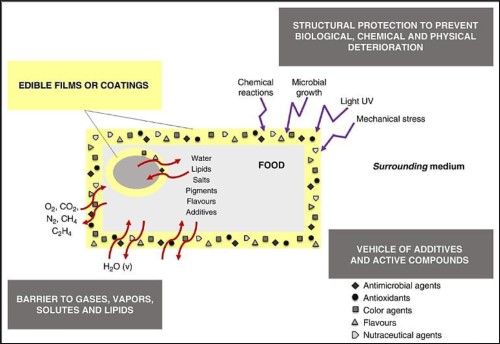
Fig. 2. Functions of edible films and coatings (Salgado, Ortiz, Musso, Di Giorgio, & Mauri, 2015).
There are many factors that may cause the migration of active compounds from package to food. For example, food components such as fats and moisture can increase the release of phenolic compounds from active packaging to the food. Besides, high temperatures and chemical affinity/solubility and can also increase the movement of molecules of the active agents.
The migration tests can be used to determine the movement of active compounds in the polymeric matrices where a specific time and temperature conditions are applied depending on the type of food being packaged and its characteristics of use and storage. Additionally, other characteristics, such as the type of polymer and concentration of migrant components must also be taken into account when performing migration tests (Ribeiro-Santos et al., 2017, Ribeiro-Santos et al., 2017).
The migration of active components can be measured using a chromatographic methods that allows separating, identifying and quatifying the bioactive compounds in packaging. For example, Ribeiro-Santos, de Melo et al. (2017) produced a whey protein film incorporated with a blend of essential oils and studied the migration of active compounds to food and a food stimulant. During this study, it was observed that eucalyptol migrated the most when compared to other active compounds. In addition, it was determined that the higher the concentration of essential oil blend in the film, the higher the migration rate of active compounds to a food. They also reported that an increase in temperature causes active compounds to migrate faster from the film.
6. Effect of essential oil incorporation on the antioxidant properties
Food deterioration is usually caused due to the process called oxidation. It may affect food products during their processing and storage and result in irreversible changes on their organoleptic and nutritional properties. Lipid oxidation is one of the main factors causing food perishability because foods containing a high amount of fatty acids are more susceptible to oxidation. Lipid oxidation is responsible for discolouration, changes in texture, rancid flavour and odour, nutrient loss, and production of toxic compounds (Wang et al., 2019). Therefore, it is essential to prevent oxidation in food products by using natural antioxidants instead of chemical additives in active packaging that will lead to an increase of consumer acceptance of safe products.
Since essential oils are rich in antioxidants, they are commonly used in edible films and coatings (Atarés et al., 2010, Jamróz et al., 2018). The antioxidant activity of essential oils can be expressed by their ability to act as oxygen scavengers and allow the diffusion of active agents into coated food products. Besides, the recent study carried out by Zheng et al. (2019), used the acorn starch and eugenol in edible chitosan-based film and determined that the incorporation of eugenol into edible film significantly increased the antioxidant activity (around 86.77%).
A variety of different methods can be used to examine the antioxidant activity of essential oils in films. The most common analytical methods include FRAP assay and DPPH assay. FRAP assay is also known as ferric – reducing antioxidant power assay. FRAP or ferric-reducing antioxidant power assay is a method that uses antioxidants to reduce Fe3+to Fe2+ in colorimetric reaction at low pH. The ferrous – probe complex becomes blue and the absorbance is measured at the wavelength of 593 nm in relation to the total reducing capacity of antioxidants (Atarés & Chiralt, 2016). DPPH or 2,2-diphenyl-1-picrylhydrazyl free radical method is used to determine the antioxidant properties of natural products by showing the scavenging capacity of antioxidants present in plants and food extracts (Sujarwo & Keim, 2019). Both of these methods were used by Wu et al. (2019), to examine the antioxidant properties of chitosan-based coating with liposomes that contain laurel essential oil and nanosilver. They found that coatings incorporated with laurel essential oil and nano silver has a higher free radical scavenging capacity. Table 1 shows the recent studies on the use of essential oil in food packaging.
Table 1. Recent studies dealing with the effect of essential oil addition on the in vitro antioxidant properties of films.
| Essential oil | Polymer | Result- | Reference |
|---|---|---|---|
| Thyme oil, Lemongrass oil and sage oil | Sodium Alginate |
• Thyme oil shown strongest antimicrobial activity • Nano-emulsions containing EOs and polysaccharides could be used to form edible films |
Acevedo-Fani et al. (2015) |
| Eugenol | Chitosan pectin starch |
• Improved functional properties of the film, antimicrobial and antioxidant property enhanced |
Zheng et al. (2019) |
| SaturejaKhuzestanica | Kefiran carboxymethyl cellulose |
• Exhibited antimicrobial activity against S. aureus and E. coli • Improved antioxidant property |
Hasheminya et al. (2019) |
| Cinnamon oil | Chitosan-gum arabic edible film |
• Enhanced the water barrier properties of films • Greatly enhanced antioxidant effectiveness |
Xu et al. (2019) |
| Eugenol and/or ginger essential oil | Gelatin chitosan |
• Enhanced UV–Vis light barrier and antioxidant properties • Increased roughness of the film surface |
Bonilla, Poloni, Lourenço, and Sobral (2018) |
| Helichrysum italicum | Along with cold nitrogen plasma |
• S. aureus viable count reduced in biofilm below 2 logs CFU per cm2 after 1‐day storage |
Cui, Li, Li, and Lin (2016) |
| R. officinalis L, A. herba alba Asso, O. basilicum L, M. pulegium L. | Sodium alginate |
• Decreased moisture, thickness and tensile strength • High antibacterial effect against foodborne pathogenic bacteria and a strong antioxidant ability |
Mahcene et al. (2020) |
| Oregano oil | Soy Protein |
• Strong antibacterial activity against E. coli and S. aureus • Better mechanical properties and water vapor barrier property due to encapsulation |
Dos Santos Paglione et al. (2019) |
| Rosemary oil, mint oil | Chitosan pectin and starch polymer |
• Reduced tensile strength and water barrier properties. • Improved flexibility • Zone of inhibitions against B. subtilis, E. coli and L. monocytogenes increased at least by 40% |
Akhter, Masoodi, Wani, and Rather (2019) |
| Cinnamon oil, marjoram oil, and thyme oil | polypropylene (PP) surfaces |
• Optimized disinfectants successfully eliminate 24, and 168-hour old immature and mature biofilms formed on PP surfaces |
Vidács et al. (2018) |
| Clove oil | Citrus pectin |
• Improved heat stability • Antimicrobial efficiency against S. aureus and L. monocytogenes |
Nisar et al. (2018) |
| Ginger essential oil | Gelatin based film |
• Improved antioxidant activity but no antibacterial activity observed |
Alexandre, Lourenço, Bittante, Moraes, and do Amaral Sobral (2016) |
| Rosemary extracts | cassava starch films |
• Significant antioxidant activity, enhanced UV-properties |
Piñeros-Hernandez, Medina-Jaramillo, López-Córdoba, and Goyanes (2017) |
| Thyme essential oil | β-cyclodextrin ε-polylysine nanoparticles, gelatin |
• Exhibited excellent antimicrobial activity against C. jejuni on chicken |
Lin et al. (2018) |
| Clove essential oil | Polylactic acid and poly(butylene adipate-co-terephthalate) |
• Clove oil exhibited 80% UV blocking property • Complete killing of S. aureus that is a reduction from 6.5 log CFU/mL to 0 log CFU/mL was observed |
Sharma et al. (2020a) |
| Clove essential oil (CEO) | ß-cyclodextrin (ß-CD) |
• Absorb water from the relative humidity of 60% • Decreased elasticity |
Maestrello, Tonon, Madrona, Scapim, and Bergamasco (2017) |
| Rosemary essential oil | starch-carboxy methyl cellulose |
• Inhibitory effects against S. aureus increased, higher water vapor permeability |
Mohsenabadi et al. (2018) |
| Thyme essential oil | Polylactic acid and poly(butylene adipate-co-terephthalate) |
• Thyme oil composite film exhibited 20% UV blocking property • Inhibited E. coli biofilm growth by 71.39% |
Sharma et al. (2020a) |
| Citronella oil, coriander oil, tarragon oil and thyme oil | Hake protein |
• Decrease in mechanical properties, inhibition against Shewanella putrefaciens • Increased antioxidant property |
Pires et al. (2013) |
| Laurel essential oils | Chitosan coated polyethylene (PE) films |
• Strong antimicrobial activity. • Extend storage period of pork from 9 days to 15 days at 4 °C |
Wu et al. (2019) |
| Cinnamon essential oil | Polylactic acid nano film |
• MIC against E. coli and S. aureus was approximately 1 mg/ml. • Effectively prolong the shelf life of pork |
Wen et al. (2016) |
| Cinnamon essential oil | Polylactic acid and poly(butylene adipate-co-terephthalate) |
• 10% (w/w) cinnamon oil PLA-PBAT film exhibited 80% increase of UV-blocking property • Inhibited E. coli biofilm by 89.82% • Reduced S. aureus growth by 4.26 log CFU/ml |
Sharma et al. (2020b) |
| Rosemary oil, Myrtle oil and Thyme oil | Polylactic acid (PLA) |
• 1.5% commercial thyme oil and 5% natural myrtle oil significantly increase the antifungal activity against Aspergillus niger sp. |
Yahyaoui et al. (2016) |
| Lavender essential oil | starch, furcellaran and gelatin (S/F/G) films |
• Showed antioxidant and antimicrobial ability |
Jamróz et al. (2018) |
| Pine essential oil | Polylactic acid and poly(butylene adipate-co-terephthalate) |
• Lower Young's modulus and greater elongation at break |
Hernández-López et al. (2019) |
| Eucalyptus essential oil | Polylactic acid and poly(butylene adipate-co-terephthalate) |
• UV blocking property enhanced by 40% • Reduced S. aureus growth by 3.04 log CFU/ml and E. coli by 3.58 log CFU/ml • Inhibits E. coli biofilm by 84.37% |
Sharma et al. (2020b) |
7. Effect of essential oil incorporation on the antibacterial properties
Food can quickly deteriorate due to the presence of pathogenic and spoilage microorganisms. The growth of spoilage microorganisms may result in lipid oxidation that causes degradation of materials in food and changes its appearance, texture, smell and taste. On the other hand, food-borne pathogens may directly or indirectly infect humans and cause certain diseases. Incorporation of bioactive compounds such as essential oils into active packaging may increase the shelf-life of food products resulting in a reduced amount of waste. Essential oils extracted from various parts of aromatic plants contain several bioactive compounds that can act as antimicrobial agents (Atarés & Chiralt, 2016). Fig. 3. shows various mechanisms of essential oils activity against microorganisms.
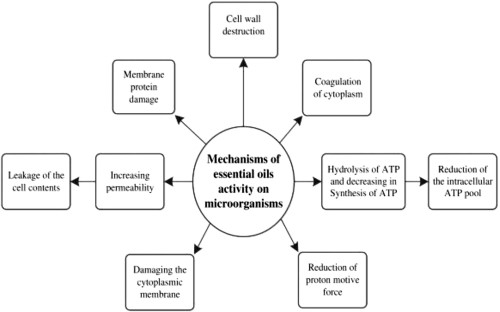
Fig. 3. Mechanisms of antimicrobial activity of essential oils (Khorshidian et al., 2018).
The antibacterial properties of essential oils can be assessed in vitro by applying different methods that include agar wells method, disk diffusion method, agar dilution method and broth dilution method. Thielmann, Muranyi, and Kazman (2019) used broth microdilution method to test the antibacterial activity of 179 commercial essential oil samples against food-borne pathogenic bacteria Escherichia coli (E. coli) and Staphylococcus aureus (S. aureus). The results showed that thyme and oregano essential oils are the most effective as well as Azadirachta indica and Litsea cubeba essential oils that can be considered as new antibacterial candidates against E. coli and S. aureus.
The use of some essential oils in biodegradable materials for active food packaging can be quite limited because of their potent odour. However, the addition of essential oils into the food packaging material matrix, can significantly improve its antimicrobial properties by creating the interaction with film polymer and reducing the movement of antimicrobial agents into foods. The migration of antimicrobial compounds into the food products is depended on various factors such as the electrostatic interactions between antimicrobial agent and the polymer matrix, osmosis, physical changes and environmental conditions (Atarés & Chiralt, 2016).
As it was mentioned before, the antibacterial activity of food packaging materials can be tested using different methods. One of the most common screening methods is a disc diffusion assay where a film disc is placed on top of the previously inoculated agar plate. Sánchez Aldana, Andrade-Ochoa, Aguilar, Contreras-Esquivel, and Nevárez-Moorillón (2015) used this method to study the antibacterial activity of pectic-based edible films that contain Mexican lime essential oil. The results showed that bagasse pectic films exhibited better in vitro antibacterial activity against E. coli, S. typhimurium, S. aureus, B. cereus and L. monocytogenes while films with Mexican lime bagasse and pomace were more effective against Gram-negative bacteria.
8. Legal aspects of the use of essential oils in food
In order of essential oils to be used as flavouring agents in and on food products, they must be registered by the European Commission (EC) (Commission, 2008). Regulation (EC) No 1334/2008 issued by European Commission contains various requirements that must be put in place to ensure the safe use of flavourings. It also provides with the list of definitions describing different types of flavourings. In addition to this regulation, Annex I was introduced on 1 October 2012 containing the Union list of approved flavourings which is reviewed and updated periodically. Regulation (EC) No 1334/2008 indicates that undesirable substances must not be added into foodstuffs unless they are included in the authorised Union list.
In the United States, the Food and Drug Administration (FDA) also approved the list of essential oils that can be used as flavouring agents. Besides, these essential oils are classified as GRAS (Generally Recognised as Safe). However, FDA notes that essential oils are considered safe if they are used in recommended quantities (US FDA, 2018). Even though essential oils can be used as food additives, in some cases, they can cause allergic reactions.
The use of the essential oils can cause adverse health effects such as eye, skin and mucous membrane irritations and sensitivity to oils which have aldehyde and phenol groups in their composition (Ali et al., 2015). Tisserand, Young, Tisserand, and Young (2014) also reported several essential oils that can cause allergic severe effects in case of acute oral ingestion. For example, ingestion of clove essential oil can result in acidosis, degradation in liver functions, reduced blood glucose levels, convulsion, ketonuria or even coma. Poisoning from citronella essential oil can be distinguished by the signs and symptoms that include fever, vomiting, convulsions, cyanosis and deep and rapid respiration. Hence, it is crucial to determine the balance between the effectiveness and toxicity of essential oils (Ribeiro-Santos, Andrade et al., 2017).
9. Limitations of using essential oil as food packaging
Essential oils have numerous significances when incorporated in food packaging such as increase in antioxidant property, UV barrier property, antimicrobial property and many more. However, it has a few limitations as well. The major drawbacks of the use of essential oil as active agents is its low solubility, high volatility, its strong aroma and the possibility of negatively affecting organoleptic properties of food. Furthermore, essential oils possess poor solubility, heat and light sensitivity, and high volatility. Due to these, the chances of losing the essential oil from the packaging increases. To save EO from losing techniques like nano emulsification and encapsulation have been used. To overcome low solubility and heat and light denaturation Moghimi, Aliahmadi, and Rafati (2017) had incorporated nanoemulsions of Thymus daenensis EO in hydroxyl propyl methyl cellulose (HPMC) films (Moghimi et al., 2017). Moreover, Lee and Park (2015), had encapsulated thyme essential oil into halloysite nanotubes (HNTs) by a vacuum process to control the release rate and to solidify the thyme oil (Lee & Park, 2015).
Another major drawback of essential oil in food packaging is its possibility of negatively affecting organoleptic properties of food. As food consist of various interconnected microenvironment having complex matrices. If the level of EO high in the product it may exceed the acceptable level of organoleptic, resulting in the change of the natural taste of the food product (Ribeiro-Santos et al., 2017). Nano fibres are been studied more as food packaging to overcome the negative impact. Aytac, Ipek, Durgun, Tekinay, and Uyar (2017) had fabricated thymol inclusion complex (IC) encapsulated electrospun zein nanofibrous webs (zein-THY/γ-CD-IC-NF) as a food packaging material (Aytac et al., 2017). Wen et al. (2016), had incorporated cinnamon essential oil/β-cyclodextrin inclusion complex into polylacticacid nanofibers via electrospinning technique (Wen et al., 2016).
10. Future trends
There is a variety of foods that are very susceptible to spoilage microorganisms and lipid oxidation during their storage period that leads to high losses in the market. Also, the continually growing consumer demand for healthy and safe food products led the researchers to find more natural alternative approaches in order to enhance the quality and safety of foods together maintaining their nutritional values and sensory attributes. Since essential oils are approved as additives by EC and FDA, they are now most likely to be used in and on the food products instead of synthetic preservatives. That is why there is a growing interest in essential oils being used as additives in active packaging due to their bioactive properties.
More and more researches develop patents proving the beneficial properties of essential oils in the food packaging (Ribeiro-Santos, Andrade et al., 2017). The patent number WO 2013084175A1 (Ortoloni, Sagratini, Sirocchi, & Vittori, 2013) states that the incorporation of Rosmarinus officinalis, Citrus limon and Vitis vinifer essential oils into packaging materials, have a potential to inhibit and control the development of biogenic amines in fresh produce. Moreover, in the patent US20160325911A1 (Domingo, García, Prieto, & Saldaña, 2016) had filed for the development of an antimicrobial compositions for food packaging consisting of salicylaldehyde and carvacrol, thymol or their mixture. Also, the subject of patent US20190008146A (Ramirez & Sanchez, 2019) is the degradable packaging for fruits and vegetables that are composed of polyolefin-based polymer matrix incorporated with a variety of essential oils such as eucalyptus, nutmeg, hinoki, cinnamon and oregano. Encapsulation of these essential oils into degradable packaging significantly increases its antifungal and antimicrobial properties. Zhang M, 2019 were granted a patent in method for conditioning and preserving beef by combining composite essential oil (clove essential oil, cinnamon essential oil and illicium verum essential oil) for 30 s and modified atmosphere packaging (Zhang, M., Feng, L., Xu, H. and Zhang, W., Nanjing Jianggao Drying Equipment Co Ltd and Jiangnan University, (2019), 2019).
11. Conclusion
Food packaging plays a vital role in protecting food products from environmental factors such as UV light, oxygen, water vapour, pressure, heat. It also helps to improve food safety and prolong shelf-life by protecting from chemical and microbiological contaminants. There are several packaging technologies that help to maintain the quality of foods. The more innovative approaches like active packaging overtake the traditional packaging technologies due to their positive effects in solving ecological problems and increasing consumer acceptability. Though active packaging can contain synthetic additives, there is a growing interest in the use of bioactive compounds such as essential oils in biodegradable materials for active food packaging. Essential oils are volatile liquids extracted from various parts of the aromatic plants and can be identified based on their aroma compounds. These bioactive compounds are suitable for active packaging due to their ability to prevent the growth of food-borne pathogens and preserve food products. Current applications of essential oils into active food packaging include their use in the form of films and coatings that are applied onto different food groups such as fruits, vegetables, fish products, meat products, milk and dairy products, and bread and baked foods. The structural arrangement of essential oil components has an impact on the final packaging material microstructure. It can increase the tensile, barrier, and optical (colour, gloss and transparency) properties of the materials depending on the type and concentration of the essential oils. The migration of active compounds from biodegradable materials to food is highly depended on the food components such as moisture which can accelerate the emission of phenolic compounds from active food packaging materials. Essential oils increase the antioxidant activity of the packaging materials due to their ability to act as oxygen scavengers and allow the diffusion of active agents into coated food products. Since essential oils contain a high amount of bioactive compounds, they improve the antibacterial properties of the packaging material, which in turn protect foods from pathogenic bacteria. In order of essential oils to be used as additives in biodegradable material, they must be registered by the European Commission. Once the essential oils are approved as additives, they are now most likely to be used in and on the food products instead of synthetic preservatives.
CRediT authorship contribution statement
Shubham Sharma: Conceptualization, Investigation, Data curation, Writing - original draft. Sandra Barkauskaite: Conceptualization, Investigation, Data curation, Writing - original draft. Amit K. Jaiswal: Conceptualization, Writing - review & editing, Supervision, Project administration, Funding acquisition. Swarna Jaiswal: Conceptualization, Writing - review & editing, Supervision, Project administration.
Declaration of Competing Interest
The authors declare that they have no known competing financial interests or personal relationships that could have appeared to influence the work reported in this paper.
Acknowledgement
Authors would like to acknowledge the funding from Technological University Dublin - City Campus under the Fiosraigh Scholarship programme, 2017.
References
Acevedo-Fani et al., 2015
Domínguez et al., 2018
Fernández-López and Viuda-Martos, 2018
Moghaddam and Mehdizadeh, 2017
Moghimi et al., 2017
Perdones et al., 2016
Realini and Marcos, 2014
Terry, Ilkenhans, Poulston, Rowsell, & Smith, 2007
Zheng et al., 2019

